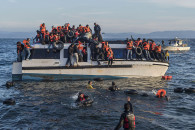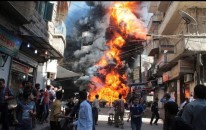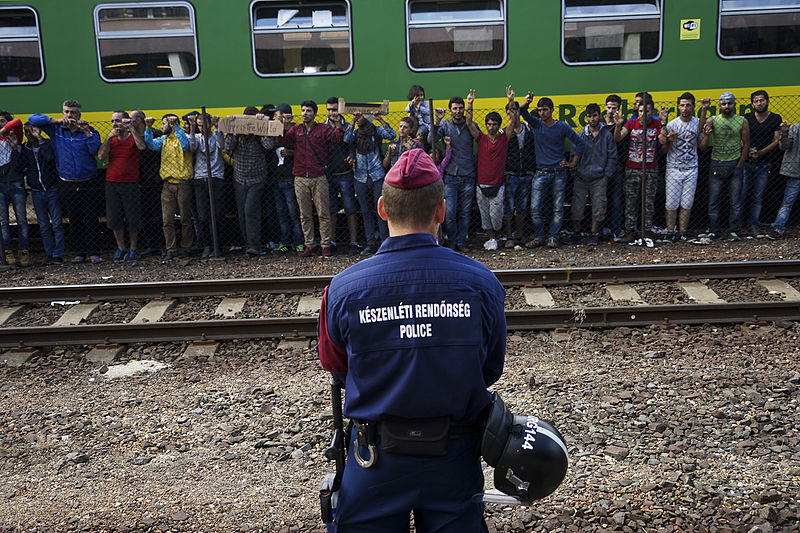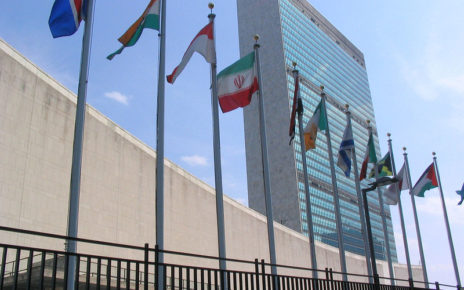There is no clear end to the ongoing humanitarian crisis in Syria. The growing influx of migrants into Western nations has also led to burgeoning civil unrest in European states. Amid the turmoil, there are now assertions that the migrant crisis has been manipulated into a coercive military strategy by certain countries, notably Russia, aimed at weakening the host nations, which are left with no choice but to accept incoming flows of refugees. Earlier this month, Supreme Allied Commander Europe (SACEUR) of the North Atlantic Treaty Organization (NATO), General Philip Breedlove claimed that the migrants moving from the Middle East into Europe are ‘weaponised’.
The term ‘weaponization’ points to the use of non-combatants or benign objects as tools of armament. In this context, it means that displacement of refugees was strategically engineered in order to ignite intra-state conflict and destabilisation in the region. Even though there is no substantial evidence to suggest that forced migration has been purposefully employed as a coercive mechanism, Russia and other countries threatened to employ it as a strategy more than a decade ago. Kelly Greenhill from the Center on Contemporary Conflict has documented at least fifty-six discrete attempts at precipitating engineered migration in recent history. For instance in 2002, the President of Belarus, Alexander Lukashenko, threatened the EU to ‘flood’ the European Union (EU) with migrants, if he was not invited to the 2002 Prague Summit. Even though European leaders did not send an invitation to Belarus, a delegation from Belarus was present at the Summit. Evidently, the threat of a mass migrant flow was enough for the EU to consent to cooperate with Belarus. If NATO SACEUR General is right, it means that Russia’s intervention in Syria is likely driven by political motives to undermine the EU and protect its naval base in Tartus.
In addition to the theory of weaponization, there is an alternative view, which states that the migrant crisis is an unavoidable corollary of the long-standing hostilities in the conflicted region. After years of protracted violence, Western nations are now sharing the burden of the natural consequences. Syrians, individually, do not pose a threat to the internal security of Europe, but when they arrive in host countries in large numbers, they are often perceived as the root cause of all civil divisions and tensions that begin to unfold in migrant-receiving countries.

PART I: CLAIMS OF WEAPONIZATION
Background of the Syrian Conflict
Since March 2011, when pro-democracy protests sparked the Syrian civil war, over 11 million people have been forced out of their homes. The civil war began with non-violent protests, which then rapidly evolved into aggressive clashes between dissidents and government forces. As ethnic divisions emerged between the rebellious Sunni-majority groups and the Shia members of the ruling elite, the conflict intensified. The re-surfacing of prevailing sectarian disputes facilitated the involvement of the Islamic State (IS) in the conflict. This further militarized the protracted violence, causing the civil war to evolve into a multi-state conflict between regional and global actors.
International organizations, such as the UN, became involved once allegations surfaced that the Syrian army committed violations against International Law. Reports of war crimes, such as indiscriminate attacks against civilians, torture and inhuman treatment, the use of chemical weapons, the use of starvation as a means of warfare, and targeted attacks against humanitarian and medical personnel finally prompted a response from Western nations. With international non-state actors and terrorist organizations involved, Western militaries also intervened in an attempt to arrest the spread of religious extremism in the Middle East with IS as the emerging power.
As a result, a United States-led coalition began air-strike operations in Syria in 2014, the primary objective being the ‘degradation and destruction of the IS forces’ in the region. Russia became militarily involved in September 2015, advocating for an international effort to target IS, which included cooperation with the Assad government. On February 22, 2015, the United States and Russia issued a joint statement on the cessation of hostilities in Syria, calling on all Syrian parties to cease aggression against each other, and a focus on IS IS, or “Daesh”.
The Geopolitical Picture: US and Russia
In spite of this collaboration, the American government has been critical of Russia’s stance on how to contain and ultimately end the civil war in Syria. The United States is not in favour of cooperating with the Assad regime, which it holds responsible for the widespread brutality carried out against its own people. The US has also issued sanctions against Russian arms exports to countries that have been actively working with the Syrian government. American leaders have spoken out against Russia’s apparent use of forced migration tactics. For example, in addition to General Breedlove’s claim, U.S. Senator John McCain has also said that President Vladimir Putin “wants to exacerbate the refugee crisis and use it as a weapon to divide the transatlantic alliance and undermine the European project.”
Prior to Russia’s explicit collaboration efforts with the Assad regime and its active involvement in Syria, Russia had conducted other military operations such as the recent annexation of Crimea from Ukraine and Russian militarization of the Arctic which put pressure on Russian relations with the West. Based on Russia’s history of involvements, the United States now claims that Russia’s role in the mass displacement of Syrians is only the latest step in its ‘irregular and asymmetric warfare’.
While Russia has adamantly dismissed the accusations of coercing migrant populations into Europe, it is an undeniable fact that Assad’s military advancements would not have been successful if it weren’t for Russian airstrikes. These advancements created waves of refugees and overwhelmed the neighbouring countries as well as certain EU states that have temporarily adopted migrant-tolerant policies. Since Russia joined forces with Assad in September 2015, the number of attacks on non-military targets, such as medical centres and residential homes has increased, which ultimately accelerated and exacerbated the outflow of migrants.

Populations in War
When we look at the Syrian government’s end-goals, it’s brutal targeting of civilian populations through the use of improvised explosive devices in urban areas, and its strategic campaigns against non-military infrastructure make it hard to dismiss the claims that the displacement of Syrians was planned, to say the least. In an interview with Andrew R. Basso, an expert on displacement theory, Basso explains that, theoretically speaking, the aggressor’s provocation of mass displacement of non-combatants achieves three principal goals: A pacified resistance; a shift in the theatre of operations; and the infliction of non-combative damages upon the host nations of refugees. To a Syria-Russia partnership, these goals are all desirable.
As the Syrian government destroyed civilian infrastructure in rebel-held area, keeping the uprising going any longer became extremely difficult. This led to a forcibly pacified resistance. According to the research conducted by Fabrice Balanche, a leading scholar on the emerging ‘Syrian crisis’, the majority of refugees originate from rebel-held zones. The war has cast out millions of Syrian residents, but more importantly, it has deprived Syria of the means to stand up against Assad.
Assad moved the ‘theatre of operations’ to the regions where Sunni Muslims were pre-dominant. His regime has relentlessly targeted civilians in those regions, raising the level of longstanding sectarian aggressions between certain Sunni and Shia Muslim groups. The religious polarization characterized the conflict as one fought on religious lines, drawing extremist factions e.g. Al Qaeda and IS, into joining forces against Assad. This created an incentive for Western leaders to support the Syrian government, merely to prevent terrorist groups from gaining more territory in the Middle East. The exodus of civilians from predominantly Sunni governorates has also allowed the regime to expand its area of control.
The final objective described by Basso, the destabilization of host nations, gives credence to the claim that Russia is purposefully promoting the displacement. Tensions over migrants have been well documented in the EU, where refugee influxes have overwhelmed the government resettlement agencies and challenged the combative elements of the state apparatus. Clashes between migrants and police forces have been reported in many European nations as a result of governments’ attempt to raze refugee camps. Pro-migrant governments, such as the one led by the German Chancellor Angela Merkel’s governing party, have also lost significant public support amid these clashes. Latest polls indicate considerable gains for the far-right Alternative for Germany (AfD), a party that has advocated the use of violent measures in deterring asylum seekers, as well as the immediate dismantling the single European currency.
The Aftermath
With new streams of migrants leaving Syria, circulating in Europe and finally being deported to Turkey, the crisis is far from over. The social unrest in Europe may only be starting, especially if this is part of Russia’s strategic plan.
Fortunately, refugees as an isolated element do not necessarily mean the dismantling of institutions. For example, Canada has a long history of successfully assisting and integrating refugees into society. The following section will explore Canada’s approach to refugee resettlement, and Canada’s unique military and humanitarian role in the Syrian crisis.
Part II of the series entitled “Weapons of Mass Populations: The Fate of Syrian Refugees” will consider Canadian military preparedness for displaced populations. Finally, the long-term implications of forced displacement will be discussed in Part III.




